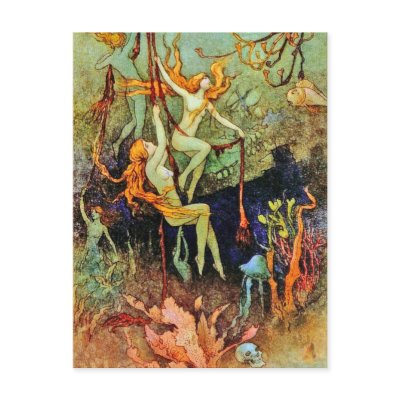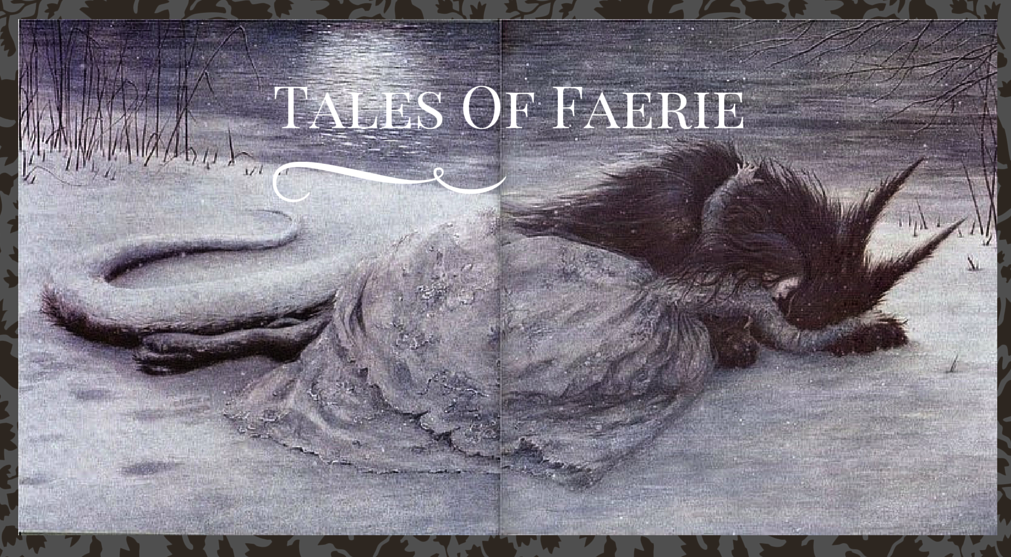Like I said before,
Surlalune has really inspired me to learn more about mermaids.
The thing about mermaids that fascinates me is that, more than any other fairy tale creature or story, throughout history people have believed, or tried to make others believe, that mermaids really do exist. Modern scientists would scoff at this idea, and there's no actual evidence to support their existence despite the many hoaxes claiming to prove otherwise, as I referenced in my original post,
Historical Evidence for Mermaids. However, Christopher Columbus himself claimed he saw a mermaid. Christopher Columbus! If he claimed he saw anything else, we'd believe him without question.
The book
Incredible Mysteries and Legends of the Sea by Edward Rowe Snow includes several accounts of supposed mermaid sightings. Snow himself admits he doesn't believe they exist, but it's fun to entertain the idea. And after reading so many detailed accounts, one begins to wonder...
I included most of the sightings found in chapter 10 of the book. I left out some that had less details or were more confusing to me, and honestly, I got tired after typing out so many...so for your reading or skimming pleasure:

-November 16, 1822-British publication, The Mirror, listed ten different mermaid appearances on the sea
-1531-Merman caught in the Baltic and presented to King Sigismund of Poland
-1610-Captain John Whitbourne reported sighting a mermaid in the harbor of St. John's, Newfoundland.
-1614-John Smith saw a mermaid, swimming "with grace," having large eyes, finely shaped nose that was "somewhat short," and "well-formed ears that were rather too long." Also "long green hair imparted to her an original character by no means unattractive."...had begus to experience "the first effect of love" until he realized that from the waist down, she was a fish.
-1673-John Jocelyn reported that his friend, Mr. Miller, had sighted a merman in Maine's Casco Bay. The merman put a hand over one side of his canoe, threatening to capsize it. Miller chopped off the hand with a hatchet, and the merman disappeared into the water, "dyeing the water purple with its blood."
-1730-A French ship's crew spotten a merman off Newfoundland, for several hours. This account was signed by all in the crew who could write and sent to the Compte de Maurepas.
-Unknown year-Gloucester, Massachusetts-mermaid boarded a fishing craft, clinging to taffrail with one hand, which was amputated much like the story from 1673. The mermaid was supposed to have heaved a "human" sigh before disappearing. The men examined the hand and found it to be exactly like that of a human woman's.

-Early 18th century-mermaid sighted off Nantucket Island from passing vessal.
-Date not given-fishing boat off the island of Yell got a mermaid entangled in its lines. Mermaid was reported to be three feet long, the face, forehead, and neck short and resembling those of a monkey, the arms small and folded across the breast, the fingers distinct (not webbed), with a few stiff bristles on top of the head and extending down to the shoulders, which could be erected at depressed at pleasure. The lower, fish-like part of the body was smooth and grey. The creature offered no resistance, but uttered a low sound. When released, she dove perpendicularly into the sea. No gills were observed, nor fins on the back or belly. Tail like a dogfish, breasts and mouth and lips resembling human features.
-Eric Pontopildon, in his
Natural History of Norway-about a mile from the coast of Denmark, near Landscrone, three sailors came upon what they thought was a dead body, but then moved and came nearer to them. The creature appeared like a strong-limbed old man with broad shoulders, with short curled black hair and a black beard, and from the body downward was pointed like a fish.
-May 1, 1714-Francois Valentyn, captain of a ship, came upon what he believed to be a shipwrecked person, but saw a man with a "monstrous long tail" that dove into the ocean.
-1758-Mermaid featured at a fair in St. Germains, France
-1775-Mermaid exhibited in London with three sets of fins
-1797-Schoolmaster Willian Munro of Thurso, Scotland spotted a mermaid combing its hair. Same mermaid supposedly spotted later in 1809 in the parish of Reay in Caithness, Scotland.
-1822-Captain Dodge announced after he sailed into Boston Harbor that he had captured a mermaid and put her on an island where he intended to educate her in human ways. He claimed he would return with her, but when he returned without her, he claimed she had died. This incident sparked a local interest in historical accounts of mermaids, including those from Pliny and Pausanias, Theodore Gaza, 1403 in Holland (a mermaid supposedly succesfully converted to human culture), 1554 in Poland, the 11th century in Sicily, in 1712 in the Dutch East Indies (a mermaid taken captive, 59 inches tall and with green hair, refused to associate with the natives and died). Captain Dodge returned with the body of the mermaid in a glass coffin (whoa, Snow White reference) and refused to let anyone remove her from the coffin. He later took the body with him and no one knows what happened to the mermaid. (This one I had to look up online.
This is a scan of the New York Mirror from 1824 that mentions Captain Dodge and the mermaid on page 375. This newspaper clearly thinks the so-called mermaid body was a construction of other animal and child corpses.)
-Antarctic explorer James Weddell, in a book published in 1825, told of a sailor hearing a musical voice, and finding a human form with long green hair and a tail resembling that of a seal, who disappeared the moment she realized she was being watched.
-1834-writer Hugh Miller tells of John Reid, a "shrewd, sensible, calculating" man who heard singing and then spotted a mermaid with long yellow hair. He caught her and forced her to grant him three wishes-that neither he nor his friends should perish in the sea, that he should be fortunate in his undertakings, and that he should be married to the fair Helen, his beloved.
-1881-Dr. Karl Blind, in the Contemporary Review, tells of the habits of mermen and women of the British Isles, who wear seal skins as disguise, but shed them and act like humans on land. Any human who obtains the skin has power over the creature.

-August 11, 1812-Mr. Toupin of Exmouth, Scotland spotted a singing mermaid a mile from Exmouth bar, whose neck, back and loins were covered with feathers.
-April 15, 1814-merman and mermaid sighted by fishermen near Portgordon, Scotland
-1819-Mermaid spotted off the coast of Ireland, size of a girl about age 10, but with "a bosom as prominent as a girl of sixteen. She had long dark hair, and full dark eyes." Dove into the ocean with a scream when a man tried to shoot her.
-1834-brig Yankee Doodle came across party of merpeople off the Riding Rocks in the West Indies
-Date not given-merman in Epirus, Greece would come ashore and hide in order to catch women. He was caught, but did not eat in captivity and died
-1870-Man conversed with mermaid under a great cliff off the Bullers of Buchan, Scotland
Images #1 and 2 by Warwick Goble, #3 from
here




























